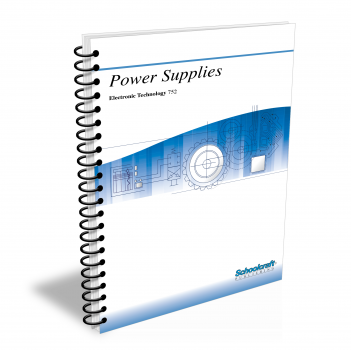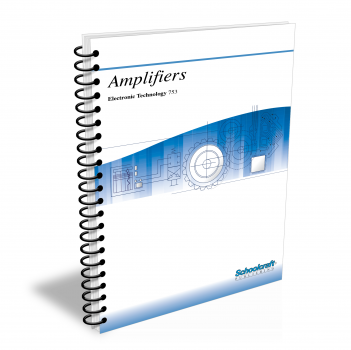Oscillators

Course Number: 754
The Oscillators textbook explains how oscillation is started and maintained. It compares LC (tuned), RC (phase-shift), and crystal oscillators, as well as sine-wave oscillators and square-wave switching circuits. It discusses monostable, astable, and bistable flip-flop operation in detail and shows expected waveforms. It explains how logic clocks are generated and conditioned, and discusses Schmitt trigger circuits, frequency dividers, and ripple counters, as well as propagation delays and glitches. The textbook describes the operation of low-pass, high-pass, band-pass, and band-reject filters, including differentiators and integrators. Finally, it describes the equipment and procedures for troubleshooting oscillator components and circuits.
Does your curriculum require additional topics not included in this textbook? Build a customized version of the Oscillators textbook below.
Recommended Contact Hours – 8
Preview a Chapter
Available Supporting Material
- Table of Contents
- Exam Copies
- Suggested Titles
Table of Contents
Chapter 1: Introduction to Oscillators
Topics: Oscillation; Oscillators and amplifiers; Classes of oscillators; Common oscillator circuits
Learning Objectives:
- Describe the conditions needed to start and to sustain oscillation.
- Explain how positive feedback affects oscillation.
- Name three kinds of feedback networks used in oscillators.
- Discuss the advantages and disadvantages of tuned circuits, phase-shift oscillators, and crystal oscillators.
- Describe several common oscillator circuits.
Chapter 2: Flip-Flops
Topics: Square waves; Switching circuits; One-shots; Astable flip-flops (multivibrators); Frequency of multivibrators; Bistable flip-flops
Learning Objectives:
- Discuss the differences between sine wave oscillators and square wave switching circuits.
- Explain how rise time and the time constant affect flip-flop circuits.
- Compare the operation of discrete transistor one-shots and IC one-shots.
- Explain how IC pairs of one-shots or IC op amps form an astable multivibrator.
- Describe the operation of bistable flip-flops.
Chapter 3: Logic Clocks
Topics: Combinational and synchronous logic; Clock conditioning; Schmitt trigger circuit; Frequency dividers; Multiphase and real world logic clocks
Learning Objectives:
- Compare combinational logic, synchronous logic, and sequential logic.
- Explain how logic clocks are generated.
- Explain how negative resistance enables the UJT relaxation oscillator to be used as a logic clock.
- Discuss the effect of hysteresis on logic clock operation and describe the operation of the Schmitt trigger circuit.
- Describe the operation of ripple counters and other frequency dividers.
- Discuss problems caused by real-world (nonideal) logic clocks.
Chapter 4: Filters and Waveforms
Topics: Wave shaping; Simple, RC low-pass, RL low-pass, high-pass, band-pass, band-reject, and active filters; Time constants; Differentiators and integrators; Function generators
Learning Objectives:
- Discuss the composition of waveforms and explain how filters change the shapes of waveforms.
- Compare the frequency characteristics of low-pass and high-pass filters and of band-pass and band-reject filters.
- Discuss the calculation of time constants in timing circuits.
- Describe methods of creating and shaping complex waveforms, including the differentiator and integrator circuits.
- Explain briefly how digital waveforms are generated with a microprocessor.
Chapter 5: Troubleshooting Oscillators
Topics: Test equipment; Tracing oscillator operation; Troubleshooting multivibrators, one-shots, flip-flops, sequential logic circuits, clocks, and filters
Learning Objectives:
- Discuss the basic requirements of four kinds of equipment used to test oscillators.
- Describe good general practices in troubleshooting oscillator components and circuits.
- Describe the steps in tracing oscillator circuit operation and selecting test points for monitoring waveforms.
- Discuss the steps in troubleshooting multivibrators, one-shots, and flip-flops.
- Discuss troubleshooting methods for sequential logic circuits, including clocks.
- Discuss troubleshooting methods for frequency dividers and filters.
Request Exam Copies
Exam Copies
Ready to see a copy of our textbooks? After selecting which textbooks you’d like to review for your course, you can submit your request by either logging in or creating an account so we know where to ship your exam copies. A representative from Schoolcraft will contact you to confirm and finish processing your request.
Exam copies are always free and yours to keep.
Selected Exam Copies
none selected
* Maximum of five copies can be ordered

